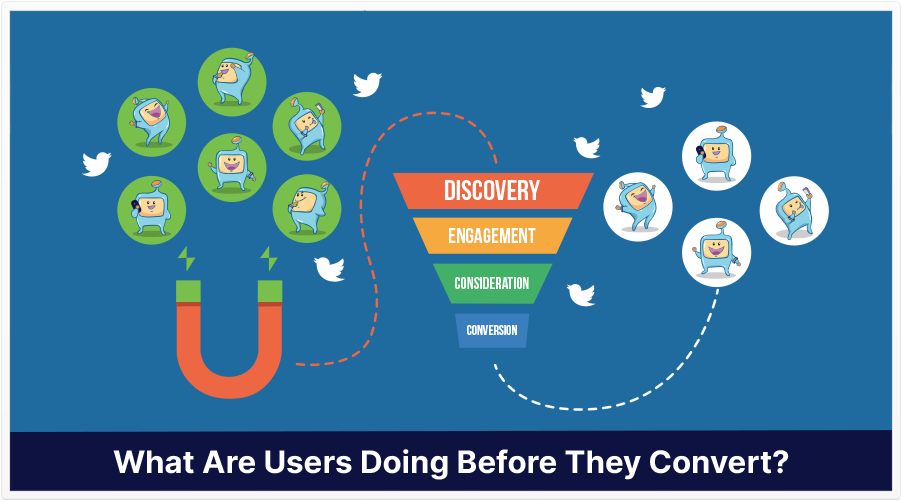
On August 25th, Google Tweeted an interesting question:
The tweet linked to an article by Eric Fettman, titled, Dynamic Event Precedence in New Google Analytics (GA4) with BigQuery and Data Studio.
The Significance of Discovering What Users Do Before They Convert
I’ve always thought that, the more you know about your prospect and customer, the better. In fact, there’s a concept called the buyer’s journey, which is very much analogous to the topic of this news item. Basically, the buyer’s journey can be thought of as the process, or sequence, a person goes through to become a customer of yours.
You have to walk them down that journey.
You can Google the term, or read about it’s use here, within the context of content syndication.
There are probably many ways of doing this. To begin with, of course, you have to know where various prospects are on their customer journey: they can be oblivious to the fact that they have a problem, or, on the opposite end of the journey, be a word-of-mouth conveyer of your message.
This news item, in a way, features an article that sort of gets you to reverse engineer that process.
It may seem daunting, but if you’re committed to it, you can do it.
The Process of Discovering What Users Do Before They Convert
While it’s easy to think that sequence explains causality, that may not always be the case. That is, just because a buyer was doing Y before Z, does not necessarily mean that Y caused Z, or is the only explanation.
I know this may be a tricky concept to grasp. Even the article’s explanation of the terms behavior attribution and precedence seems to require multiple readings to begin to understand.
To me, what this means is that, to really begin to understand this you have to open your mind to new concepts.
Thankfully, if you read the article, you’ll find that those concepts are illustrated by real-world examples and processes.
In fact, a number of Google tools are used for this.
BigQuery, as its name implies, let’s you compute large amounts of data.
Dynamic SQL parameters, while not a tool per se, are the means by which you can connect BigQuery to Data Studio. Google’s Universal Analytics can also be of aid here.
There are a few other tools that are used in this rather large, intricate process.
So, if you don’t mind learning about the number of tools involved, you can definitely learn more about how to increase your conversions.
Source: Google Analytics Twitter channel